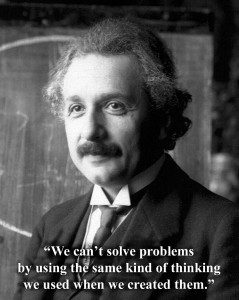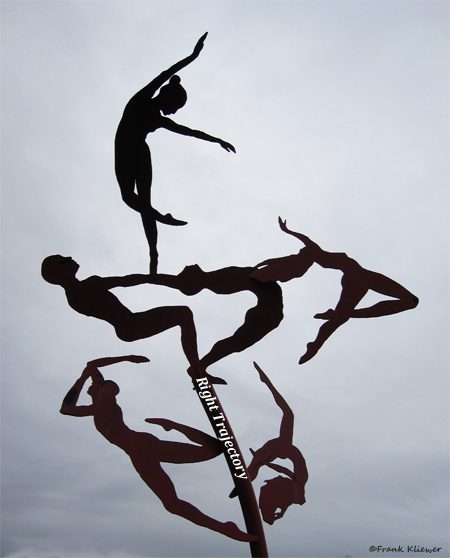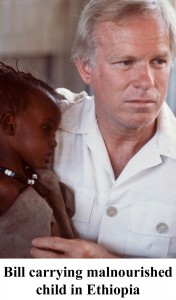As the Internet began to develop and expand in the early 1990s, we were confronted with the issue of the “Digital Divide” with Internet access limited to those with costly equipment and connections.
We looked at libraries and community centers as the short-term answer to at least create a public place for those wanting access to the new technologies and information sources we were developing. It was a battle to get the funds and create the spaces, but what we did then is now being repeated on a much broader scale, thanks to the reduction in equipment prices, but also the financial interests of those bringing mobile finance to the developing world.
Virtual Banks and ATMs are a major driving force behind the explosive use of Internet tech by the poorest of the world citizens. These new resources and connections will have an amazing impact on health care and other services as the applications and necessary funds are brought to those in need over the next few years. At the same time, new freedoms and awareness we be enjoyed by those using the devices below, and more to come…as I’d change the title of the article below to “…Will Change the Developing World.” …Frank Kliewer
5 Tech Innovations That Could Change the Developing World
Across the developing world, new technologies are helping to distribute resources for education, connectivity and health far and wide. Innovators are finding ways to make technology cheaper and therefore accessible to millions previously excluded by high costs.
Affordability is often the greatest hurdle to overcome in products from sanitation devices to tablet computers, mobile phones to solar panels.
Take a look at these five tech breakthroughs and how they are helping to level the playing field in developing countries.
1. Inexpensive Tablets
One week afterAmazonreleased theKindle Fire, the first tablet computer topresent a serious threattoApple‘siPad, another historic tablet was released. On the other side of the world on October 5, India launched theworld’s cheapest tablet, Aakash, priced at just $35 for students with government subsidies or $60 in stores, which the government hopes willreduce the digital dividebetween rich and poor.
If that price — roughly one-tenth the cost of the cheapest iPad — doesn’t sound accessible enough, the Indian government is distributing the first 100,000 units of theAndroid-powered tablet to college students for free, Reutersreports. “The rich have access to the digital world, the poor and ordinary have been excluded. Aakash will end that digital divide,” said Kapil Sibal, India’s minister of communications and information technology.
The tablet was developed byDataWind, a small British company, with researchers from the Indian Institute of Technology. In addition to fitting the price to the budget of middle class Indians, the device was tested playing two hours of video at 118 degrees Fahrenheit to replicate the oppressive heat of northern India’s summers.
2. Inexpensive Laptops
One Laptop Per Child‘sXOand Intel’sClassmate PCshare a common mission: Bringing children access to education through computer ownership. Both programs distribute rugged, affordable laptops to schoolchildren across the developing world.
Intel developed a suite of educational software to accompany the little blue laptop, which costs between $400 and $500 each to distribute. These programs enable teachers to communicate with their students through web-based applications. The computer features a swivel screen, essentially converting the laptop into a touch-tablet. Its durability was tested by baking it in an oven and placing it in a freezer.
Similarly, One Laptop Per Child donates rugged, low-cost laptops that don’t even require an electric outlet. The $200 computers are distributed to students between ages 6-12, so that they are integrated into their early education. Take a look at the video above to learn more about the non-profit’s work.
3. Inexpensive Mobile Phones
As mobile phone ownership rapidly spreads across the developing world, many have tried to create the world’s cheapest cellphone — even Venezuela’s presidentHugo Chavez.
Today,Vodafone 150can claim that title, selling a mobile phone for just under $15. While the phone is not feature-rich, it offers voice calling, text messaging and mobile payments, and it will have an enormous impact on those who have never before connected by mobile. A slightly more expensive Vodafone 250 model is available with an FM radio and color screen.
The phone was launched in 2010 in India, Turkey and eight African nations. Of course, entering into these new markets meant a lot of work to extend the mobile coverage area by the provider.
4. Alternative Energy
SunSaluter: $10,000 Winner of the EcoLiving 2011 Student Leadership Award from Scotiabank’s EcoLiving on Vimeo.
SunSaluter, winner of theStartups for Goodchallenge, aims to bring solar panels to villages in the developing world that have never had access to electricity. While solar energy is a hot topic across the world, its expense has prevented deeper penetration. Eden Full, a mechanical engineering undergraduate at Princeton University, developed solar panels that optimize energy collection as they rotate to face the sun for as much time as possible each day. The system costs just $10 and uses 40% fewer panels than typical solar energy thanks to its rotations.
5. Improved Sanitation
Bill Gates emphasized the importance of sanitation improvements when he pledged toreinvent the toiletfor the developing world.
The computer innovator has a point. According towater.org, one billion people don’t have access to clean water, and 2.5 billion people don’t have improved sanitation. So it should come as no surprise that improving sanitation is key to the progress of developing countries.
While cheap laptops and tablets are certainly exciting, some of the life improving technologies in the developing world don’t even require electricity. Last year, India’sTata Chemicalsreleased theTata Swach(the Hindi word for clean), an affordable water filter (priced at around $21) that uses nanotechnology, requires no electricity and meets theU.S. Environmental Protection Agency‘s sanitation standards.
The filter is made of rice husk ash (the natural byproduct of making polished rice) and fine nano-silver particles to prohibit bacteria growth. Using the filter prevents against waterborne bacteria and viruses. When Swach was released, Tatasaidonly 6% of urban households and 1% of rural households in India were using water purification devices.
Originating Post:





